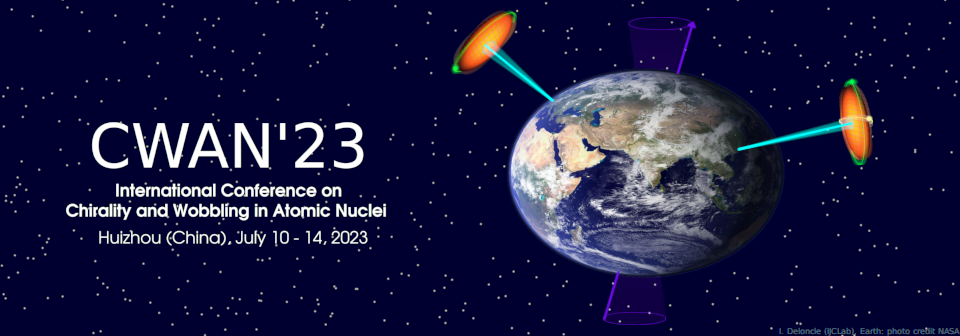Orateur
Description
Nuclear shape transitions from spherical to deformed, which accompany variation of nucleon numbers around the doubly-magic shell closures, are often manifested by octupole shapes, $\alpha_{3,\mu} \neq 0$, at vanishing quadrupole deformations and not -- as often thought -- exclusively by the prolate/oblate quadrupole shapes. Corresponding exotic nuclear geometry is described by the point-group symmetries known in molecular physics: $C_{2v}$ ($\alpha_{31} \neq 0$), $T_d$ ($\alpha_{32} \neq 0$), $D_{3h}$ ($\alpha_{33} \neq 0$) and $D_{2d}$ ($\alpha_{32} \neq 0, \alpha_{20} \neq 0$) and, needles to say, are different from the tri-planar quadrupole ellipsoids.
Large scale mean field theory calculations focussing on heavy and super-heavy nuclei (analogous mechanisms are predicted also for the lighter mass zones) predict the presence of strong shell gaps simultaneously for $\alpha_{30}\neq 0$, $\alpha_{31}\neq 0$, $\alpha_{32}\neq 0$ and $\alpha_{33}\neq 0$, wherefrom the term {\em four-fold octupole magic numbers}. Moreover, they apply for several symmetries at the same time -- in contrast to the traditional double shell gaps at spherical geometry -- wherefrom the term {\em universal magic numbers} used by the cited authors.
In this project we present a series of new theory predictions addressing exotic shape competition and isomerism, as a follow-up of our recent articles. The employed nuclear structure approach uses theory tools which are among the most powerful in the domain, such as nuclear mean field theory, inverse problem theory, group and group-representation theories and graph theory. The newly obtained parameterisations of the phenomenological mean field Hamiltonians are free from parametric correlations known to destabilise the nuclear shape predictions and systematically concord with the corresponding experimental data.
Using group representation theory, powerful spectroscopic criteria addressing the issue of identification and the structure of rotational bands built on the corresponding exotic symmetry equilibrium shapes are constructed and illustrated. Characteristically, the bands in question involve states of both parities and spin-parity combinations as well as multiple degeneracies of levels. All these features are discussed in detail establishing the strategic lines of the new spectroscopy principles. In particular, the analysis in terms of the static shapes as opposed to the large deformation fluctuations are considered and illustrated.
All these features provide enriched quantum environment for the coupling between the collective rotation angular momentum and angular momenta related to the odd-proton and neutron orbitals underlying and manifesting chirality, since they involve more exotic quantum symmetry structures as compared to those used often in the past.

